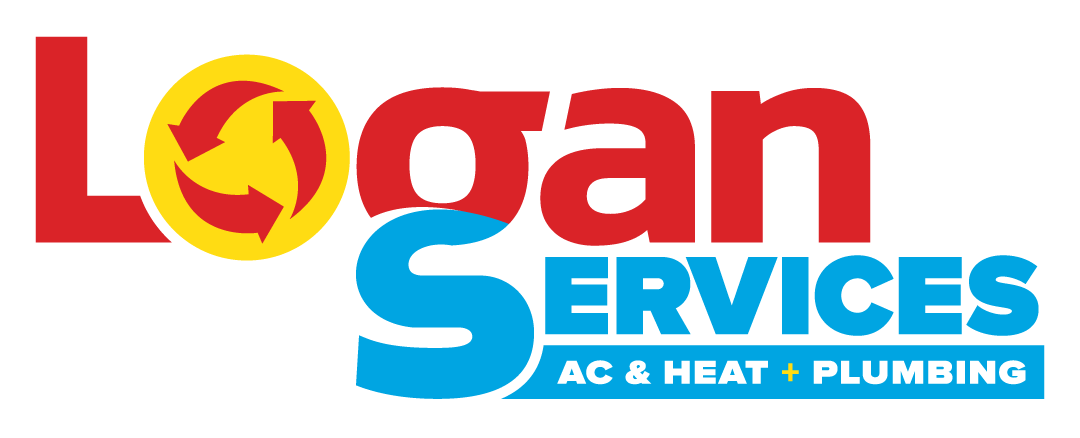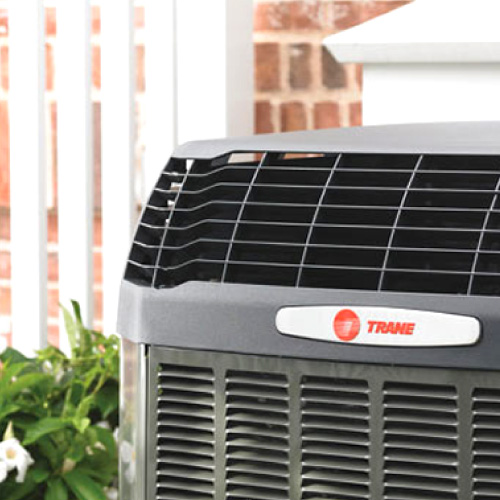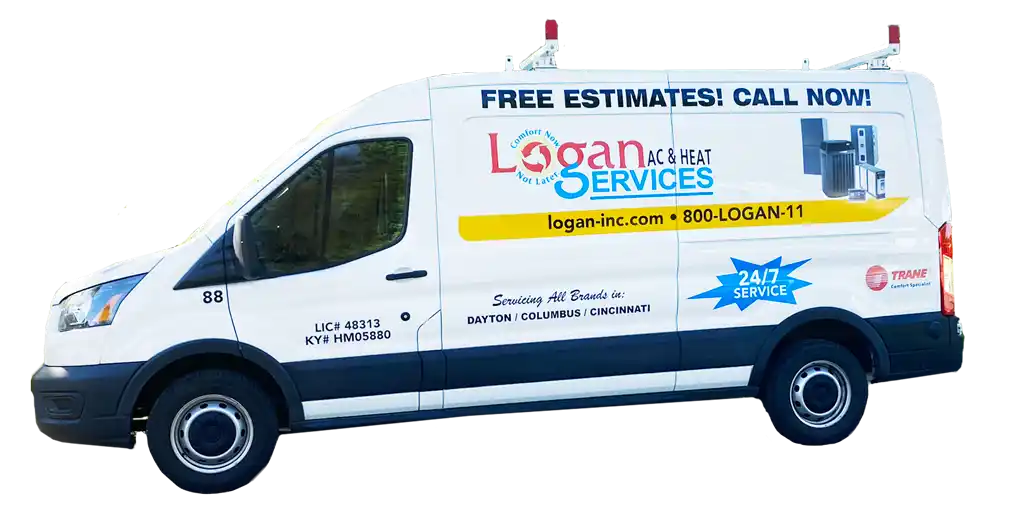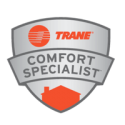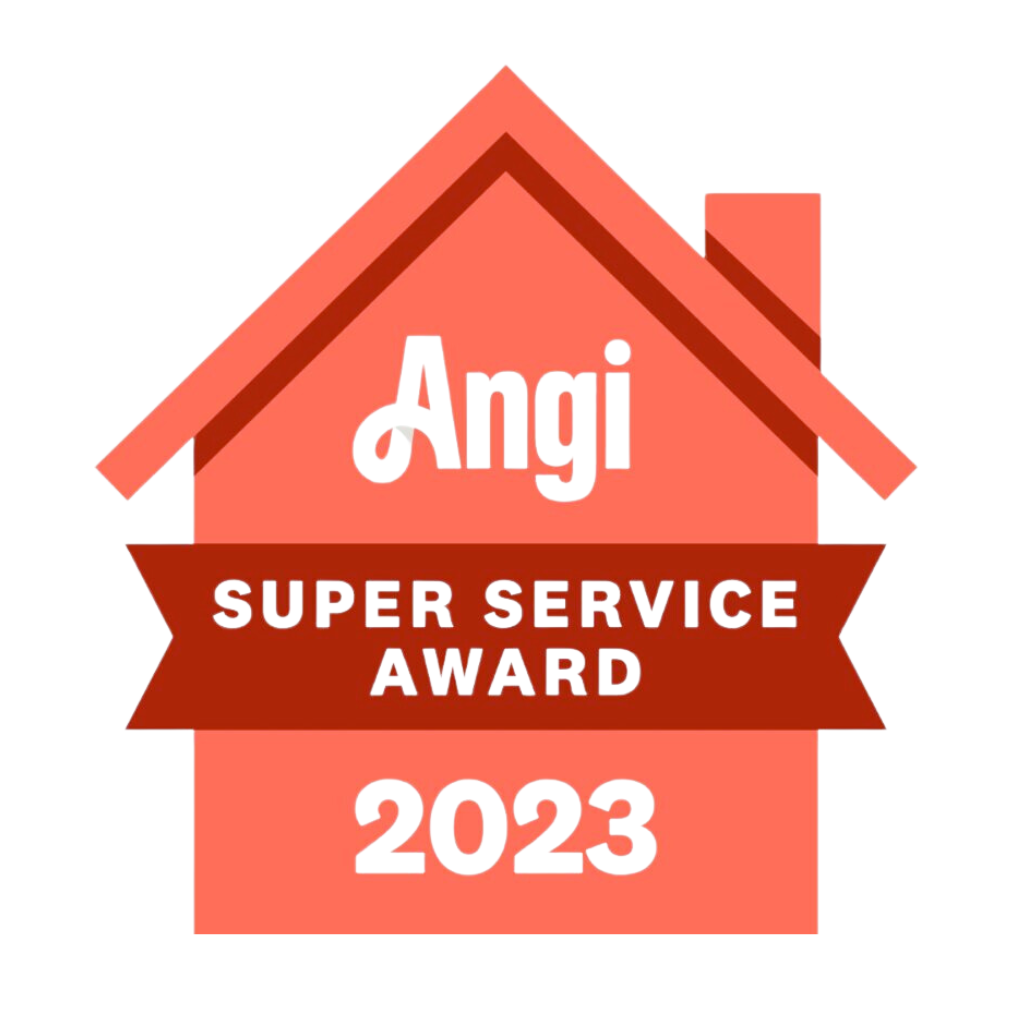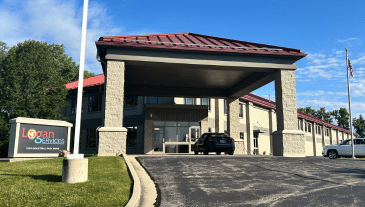AC — Abbreviation for alternating current, a type of electric current in which the polarity is constantly reversing, causing the electron flow to reverse.
ACCA — Air-Conditioning Contractors of America.
AC or DC — Abbreviation for equipment capable of operating on alternating or direct current.
A-Coil — A heat exchanger consisting of two diagonal coils that are joined together in a manner that looks like the letter “A”.
AFUE — Annual Fuel Utilization Efficiency. A measure of a gas furnace’s efficiency in converting fuel to energy—the higher the rating, the more efficient the unit.
Air Conditioner — Any device that can change the temperature, humidity or general quality of the air. More specifically, an air conditioner makes your home cooler, by drawing heat energy out of the house and transferring that heat to the outdoors.
Air cleaner (also Air Filtration System) — Removes airborne allergens from your home.
Air handler — An air moving and/or mixing unit. Residential air handlers include a blower, a coil, an expansion device, a heater rack and a filter. Heaters for air handlers are sold as accessories. In some models, heaters are factory installed.
AHRI — Conditioning, Heating & Refrigeration Institute
BTU — British thermal unit; the amount of heat required to raise or lower the temperature of one pound of water one degree Fahrenheit. The heat extracted from your home by an air conditioner is measured in BTUs.
CFM — Abbreviation for cubic feet per minute, a standard measurement of airflow. A typical system requires 400 cfm per ton of air conditioning.
Charge –To add refrigerant to a system. This is refrigerant contained in a sealed system or in the sensing bulb to a thermostatic expansion valve.
CleanEffects™ (also Trane CleanEffects™) –Trane Air filtration system that removes 99.98% of airborne allergens down to .1 micron from the filtered air, making it 100 times more effective than a standard 1” filter. Trane CleanEffects also removes over 99% of the influenza virus from your home’s filtered air, according to research by the Harvard School of Public Health, in collaboration with scientists at Environmental Health and Engineering Inc. (EH&E).
Climatuff® Compressor — The Trane Climatuff® Compressor was the world’s first successful heat pump compressor. To this day it’s the only compressor Trane uses in its residential systems. It’s well known for its superior durability, its low noise levels and high efficiency.
Comfort™ coil (also evaporator coil or indoor coil) — Part of an indoor air unit, it functions with the air conditioner or heat pump outdoors to cool and condition indoor air that flows over it by drawing out heat and moisture.
Compressor — This is the heart of an air conditioning or heat pump system. It is part of the outdoor unit and pumps refrigerant in order to meet the cooling requirements of the system.
Condenser coil (or outdoor coil) — In an air conditioner, the coil dissipates heat from the refrigerant, changing the refrigerant from vapor to liquid. In a heat pump system, the coil absorbs heat from the outdoors.
Condenser fan — The fan that circulates air over the air-cooled condenser.
Damper — Found in ductwork, this movable plate opens and closes to control airflow. Dampers can be used to balance airflow in a duct system. They are also used in zoning to regulate airflow to certain rooms.
DC — Direct current electricity. This type of electricity (as opposed to Alternating Current, or AC) flows in one direction only, without reversing polarity.
Dehumidifier — An air cooler that removes moisture from the air.
Downflow furnace –A furnace that intakes air at its top and discharges air at its bottom.
Drain pan — This is also referred to as a condensate pan. This is a pan used to catch and collect condensate (in residential systems vapor is liquefied on the indoor coil, collected in the drain pan and removed through a drain line).
Dual Compressors — An outdoor unit featuring two compressors, one for everyday cooling and a second larger one for extreme temperature days. Provides superior durability designed for cost-saving efficiency and low sound levels.
Ductwork — A pipe or conduit through which air is delivered. Ducts are typically made of metal, fiberboard or a flexible material. In a home comfort system, the size and application of ductwork is critical to performance and is as important as the equipment.
EER — Energy Efficiency Ratio (steady state)
Electronic Air Cleaner (EAC) — Electronically filters out magnetized airborne particles from contaminants in indoor air, sending them to a collector plate.
ENERGY STAR® — Trane’s high efficiency systems carry the ENERGY STAR label. The result of Trane’s partnership with the U.S. Department of Energy and the Environmental Protection Agency (EPA), ENERGY STAR products are more energy efficient and help reduce our whole earth’s pollution problems. Choosing a Trane ENERGY STAR Comfort System assures homeowners of lower energy bills and improved indoor-air quality for their home.
EPA — Environmental Protection Agency
Expansion valve — A refrigerant-metering valve with a pressure- or temperature-controlled orifice.
Evaporator coil (also Comfort™ Coil or Indoor coil) — Part of an indoor air unit, it functions with the air conditioner or heat pump outdoors to cool and condition indoor air that flows over it by drawing out heat and moisture.
Fan — Any device that creates air currents.
Filter — Any device that removes impurities through a straining process.
Flue — Any vent or passageway that carries the products of combustion from a furnace.
Furnace — That part of the heating system in which the combustion of fossil fuel and transfer of heat occurs.
Fuse — A metal strip in an electrical circuit that melts and breaks the circuit when excessive current flows through it. The fuse is designed to break in order to save more expensive electrical components.
Gas furnace heat exchanger — Located in the furnace, the heat exchanger transfers heat to the surrounding air, which is then pumped throughout your home.
Heat exchanger — An area, box or coil where heat flows from the warmer to the colder fluid or surface.
Heating coil — Any coil that serves as a heat source.
Heat pump — A mechanical-compression cycle refrigeration system that can be reversed to either heat or cool the controlled space.
HEPA filter — Filter that traps airborne particles by forcing air through very dense mesh.
Horizontal flow — Often used in attics/crawl spaces, this furnace takes air from its side, heats it and sends warm air out the other side.
HSPF — Heating Seasonal Performance Factor. This rating is used in measuring the heating efficiency of a heat pump. The higher the number, the more efficient the heat pump system.
Humidifier — A machine that adds water vapor to the air to increase humidity.
Humidistat — A humidity-sensing control that cycles the humidifier on and off.
Humidity — The presence of water vapor in the air.
HVAC — Abbreviation for Heating, Ventilating and Air Conditioning.
Hybrid heat (also Hybrid System) — Provides energy-efficient comfort for moderate heating conditions. Can use either gas or electricity.
Hybrid system (also Hybrid Heat) — This type of system provides energy-efficient comfort for moderate heating conditions. Depending on the weather and your comfort needs, it can use either gas or electricity, with an electric heat pump as the outdoor component and a gas furnace the indoor component.
Indoor coil (also Comfort™ Coil or evaporator coil) — Part of an indoor air unit, it functions with the air conditioner or heat pump outdoors to cool and condition indoor air that flows over it by drawing out heat and moisture.
Indoor/Outdoor system (also split system) — The combination of an outdoor unit (air conditioner or heat pump) with an indoor unit (furnace or air handler). Split systems must be matched for optimum efficiency.
Latent heat — A type of heat, which when added to or taken from a substance, does not change the temperature of the substance. Instead, the heat energy enables the substance to change its state.
Load calculation — Assessed by a dealer, the calculation factors in a number of criteria in your home (square footage, number of windows, year-round weather concerns) and determines what size components you should include as part of your total comfort system.
Matched system — System includes multiple Trane components designed and engineered to work seamlessly together to enhance overall performance, reliability and efficiency.
NATE — North American Technician Excellence—certification acknowledging a dealer/technician as one of the most knowledgeable and experienced at installing and servicing high-performance, precision-engineered heating and cooling systems.
Operating cost — Cost of running your home comfort system, based on energy usage.
Outdoor coil (also Condenser coil) — In a heat pump, it takes in heat to warm your home. In an air conditioner, it dissipates heat from the refrigerant, changing the refrigerant from vapor to liquid to cool your home.
Outdoor Unit — The outdoor portion of a split system such as an air conditioner or heatpump. May also be a packaged system in which all heating and cooling components are located in one cabinet.
Packaged system (or Packaged unit) — A single cabinet, typically installed outside, that houses both heating and cooling components.
Payback analysis — Number of years required before your monthly energy savings offset the original HVAC investment.
PVC — Polyvinyl chloride; a type of plastic.
Refrigerant — A chemical that produces a refrigerating effect while expanding and vaporizing. Most residential air conditioning systems contain R-22 refrigerant. R-22 is regulated under the Montreal Protocol and in the United States by the Environmental Protection Agency. R-22 is scheduled to be in production until the year 2020.
Refrigerant lines — Two copper lines connecting the outdoor condenser to the indoor evaporator coil.
SEER — Seasonal Energy Efficiency Ratio; a measure of cooling efficiency for air conditioners and heat pumps. The higher the SEER, the more energy efficient the unit.
Self-contained system — A refrigerating system that can be moved without disconnecting any refrigerant lines; also known as a package unit.
Sensible heat — That heat which, when added to or taken away from a substance, causes a rise or fall in temperature.
Sensor — Any device that reacts to a change in the conditions being measured, permitting the condition to be controlled.
Setpoint — The temperature or pressure at which a controller is set with the expectation that this will be a nominal value depending on the range of the controller.
Spine-Fin™ coil — All-aluminum outdoor coil that features the patented Spine Fin™ design. It provides greater heat-exchanging capabilities (meaning higher efficiencies) and is more resistant to corrosion than a traditional copper/aluminum coil.
Split system (also indoor/outdoor system) — The combination of an outdoor unit (air conditioner or heat pump) with an indoor unit (furnace or air handler). Split systems must be matched for optimum efficiency.
Thermostatic expansion valve — A refrigerant metering device that maintains a constant evaporator temperature by monitoring suction vapor superheat; also called a thermal expansion valve.
Thermostat — A thermostat consists of a series of sensors and relays that monitor and control the functions of a heating and cooling system.
Ton — A unit of measurement used for determining cooling capacity. One ton is the equivalent of 12,000 BTUs per hour.
Trane CleanEffects™ (also CleanEffects™) — Trane air filtration system that removes up to 99.98% of airborne allergens down to .1 micron from the filtered air, making it 100 times more effective that a standard 1” filter. Trane CleanEffects also removes over 99% of the influenza virus from your home’s filtered air, according to research by the Harvard School of Public Health, in collaboration with scientists at Environmental Health and Engineering Inc. (EH&E).
Two-stage compressor — Compressor composed of a high and low stage to increase efficiency and comfort while reducing operation noise.
Two-stage heating/Two-stage cooling — Two-stage heating and cooling is considered to be more efficient, because it operates at low speed most of the time. However, on days when more heating or air conditioning is required, it switches to the next stage for maximum comfort.
Upflow furnace — A furnace in which air is drawn in through the sides or bottom and discharged out the top.
Variable-speed motor(s) — The fan motor inside Trane’s variable-speed air handlers is designed to vary its speed based on your home’s heating and air conditioning requirements. Working in conjunction with your thermostat, it keeps the appropriate-temperature air (e.g. warm air on cold days) circulating throughout your home, reducing temperature variances in your home. It also provides greater air circulation and filtration, better temperature distribution, humidity control, higher efficiency and quiet performance.
Zoning — A method of dividing a home into different comfort zones so each zone can be independently controlled depending on use and need; an air conditioning system capable of maintaining varying conditions for various rooms or zones.
Zoning System — A method of dividing a home into different comfort zones so each zone can be independently controlled depending on use and need; an air conditioning system capable of maintaining varying conditions for various rooms or zones.

